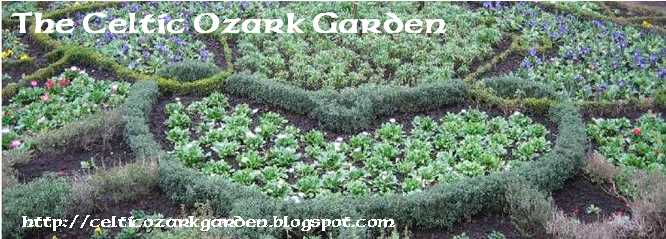It is time to think about broccoli in the Celtic Ozark Garden. BROCCOLI (Brassica oleracea Cymosa) is a yummy vegetable that deserves a place in any Celtic Ozark Garden. I hope that you will consider adding it this spring. Here are the basics you need to know.
The big heads of broccoli you see in your store is of the 'Calabrese' type. By far, it is the most popular type of broccoli grown. Buy seedlings if you have never grown broccoli before, as you will have a better chance of good growth. If you want to get experimental, you will need to start your seeds soon. You can start the seeds 8 weeks before your last frost, to give them time to grow. You’ll need plenty of sun, as the shoots emerge. You can also plant the seeds a month before your last frost, and let them take in the garden. Sow the seeds directly into the soil about ¼”, and let them do their thing.
Modern hybrids are fast growing, and if they are subjected to prolonged stress of drying, they may form tiny heads prematurely, and the plants come to nothing. That is why I always recommend that you use an heirloom style seed. You may not get a head of broccoli the size of a football, but you stand a better chance of getting a nice overall crop.
You need to provide a fertile soil and don't let the soil become dry. You can look through the archives of my blog for my soil recipe for raised bed gardens. I touched on this subject in the last blog. Add plenty of lime for the broccoli, as they like a pH 6.5 to 7.5. That is their 'ideal' range.
Plants growing in Spring, especially late spring, are prime targets for the green caterpillars that come from the white butterflies in your garden. A light netting can help to keep the butterflies off your broccoli. In about 90-100 days, your crop should be ready to go.
Sprouting broccoli can also be a good alternative crop to grow. Not many people grow this heirloom variety. You can find green, purple and white varieties of the plant. We like the white variety, because it looks a bit like cauliflower.
Spring is the time to grow this one. Sow the seeds directly into the soil, as noted above. You will need to watch for insects. But here is the cool payoff: your crop should be ready to eat in around 45-60 days. The small heads of the sprouting broccoli plants make it easy to go and pick just a portion for supper. You’ll have to grow plenty for freezing, as this crops is easy to use every day, leaving less for real food supply type considerations. Ah, but what a feast in the meantime.
Spring is the time people in cooler areas should sow sprouting broccoli. It is grown through the summer and carried over winter, for an early spring production the year following sowing. The advantage of sprouting broccoli is that, while it is not cauliflower, the white forms produce cauliflower like curds more easily than growing cauliflower itself, and the multiple small heads means that the serving sizes are right, with no waste. The disadvantage is the long time it sits around in the garden before it does anything.
There are a couple of other varieties of broccoli, but I will confine this installment of my blog to the two types I use. Good luck with your broccoli crop, and I will blog more soon from the Celtic Ozark Garden.
slainte,
Ray Province
The Celtic Ozark Garden
www.celticozarkian.com
www.celticozarkgarden.blogspot.com

No comments:
Post a Comment